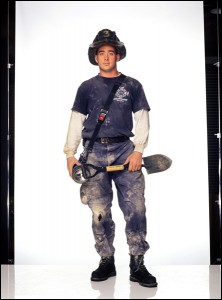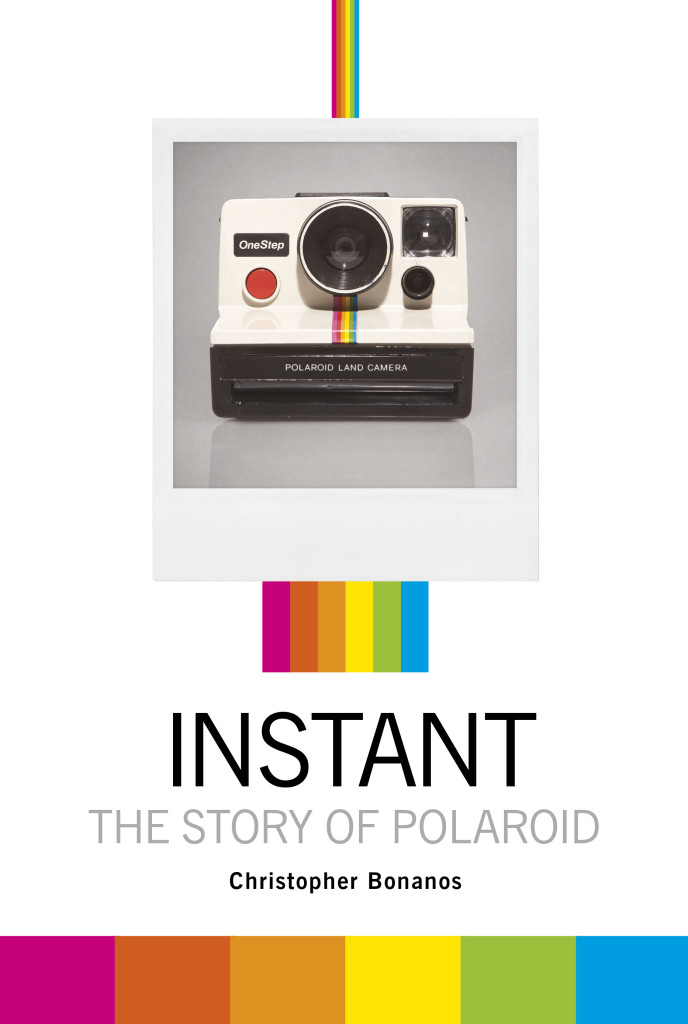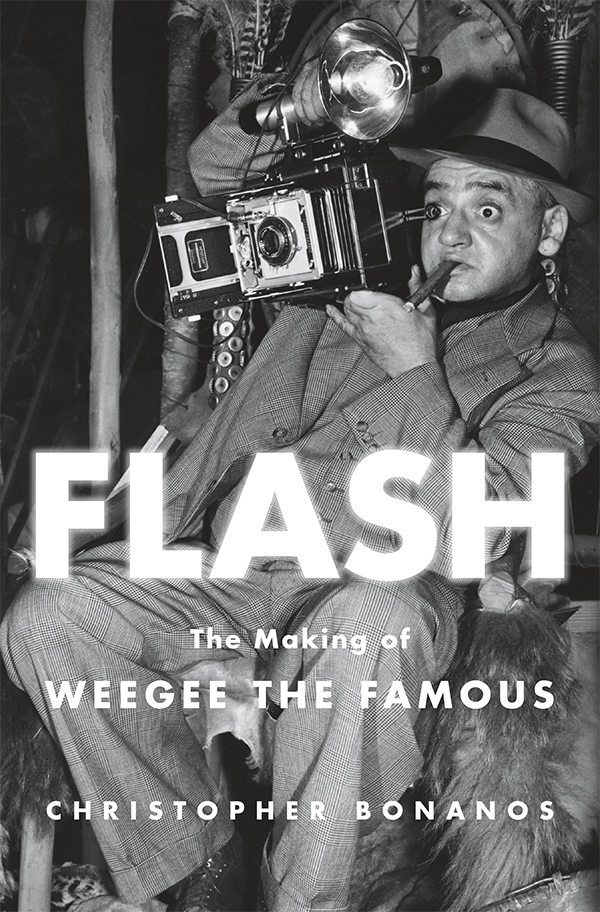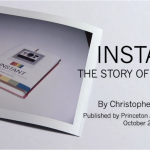Instant Artifact: The Museum Camera
Someone recently asked me about the big Polaroid camera—not the 20×24, which is alive and well and well-tended, but its giant sibling, now retired.
One day in the mid-1970s, Edwin Land went to John McCann, one of his close deputies, with an idea. Land wanted to make a full-size reproduction of Renoir’s Bal à Bougival, in the Museum of Fine Arts, Boston. “It’s 39 inches wide,” he told McCann, “and our film is slit at 40 inches. We can do it!” McCann, whose job often involved executing wonderful, near-impossible ideas that had alighted in Land’s fertile brain, soon had constructed a large camera, one the size of a room, a sophisticated cousin to the camerae obscurae of the ancients. The lens of the Museum Camera, as it was called, weighed 50 pounds (custom-built, and not, as legend has it, pulled off a spy plane). The film actually measured 44 inches wide if you counted the margins, and could be shot in sheets about 80 inches high—in other words, this camera made instant photos wider and taller than a typical door.
Built to reproduce paintings—starting with that Renoir—it spent most of its life in the Museum of Fine Arts, and rigged-up versions were built at the Vatican and other places that allowed their artwork to be photographed this way. You could, up until the late eighties or so, buy one of these uncanny one-to-one reproductions, which were much richer than conventional four-color prints: Polaroid Museum Replicas, as they were called, required no reducing and re-enlarging, and thus showed no loss of detail, though their flatness and sheen did give an odd kitschy quality to the perfectly reproduced brushstrokes. The Cambridge Historical Society reproduced its rarer paintings, and to this day exhibits the copies, keeping the originals hidden away somewhere for safety. Here’s a post showing the camera at work.
A number of artists also tried their hand at making these giant prints. Chuck Close shot himself, and some megasized nudes; Marie Cosindas shot ballet dancers. It was maddening to use for moving subjects, because the depth of field was about an inch, and the camera had no focusing mechanism; those dancers stood in front of the lens, shuffling in and out till they were in focus. Then they had to stay put till the film was pulled down into place—it was held flat to the back wall of the camera with a rigged-up Black & Decker shop vacuum—and the picture was made, quickly, with huge banks of flashes.
Sometime in the 1990s, the camera was dismantled and sold, and then was reactivated in New York by a fellow named Gregory Colbert, who among other things made experimental image transfers with the giant film, a process I’d certainly like to have seen. (He nicknamed the camera Moby C, in honor of that other New England whale.) In 2001, it had what turned out to be its last hurrah: a monumental project in which first responders to the 9/11 attacks were photographed by Joe McNally, as they came off shift. Firemen, cops, laborers, and Mayor Rudolph Giuliani—nearly every one looking haunted—all posed, and the results were published by Time magazine and exhibited in Grand Central Terminal. You can see a slideshow of them here, and read McNally’s account of making them here and here. If you were in New York during that unreal time, the photos hit you extra-hard. The ones showing the firemen, especially—a lot of these guys had just buried their brothers, and are covered in the gray-white ashy dust of the buildings. It all became a book, which you can buy here.
Soon after, under circumstances I’ve never quite nailed down, the camera was dismantled for good, its film stock having run out. I don’t know whether the lens or the processing rig still exists. I hope so: Theoretically, if New55 gets where it needs to be, a run of 40-inch-wide film could be produced, and the camera reactivated, but the odds of that are vanishingly small. Maybe it’s fitting that it went out with such an epic project, though I sort of wish it had been a happier one.
13 Responses to Instant Artifact: The Museum Camera
Leave a ReplyCancel reply
LEGALITIES
This site is not connected with or endorsed by Polaroid or PLR IP Holdings, owners of the Polaroid trademark.ON TWITTER
My TweetsBlogroll
- 'Insisting on the Impossible'
- Everything Reminds Me of You
- Flickr's Polaroid group
- Instant Options
- LandCameras.com
- Paul Giambarba: Analog Photography At Its Best
- Paul Giambarba: The Branding of Polaroid
- Polaroid
- Polaroid SF
- Rare Medium
- The Impossible Project
- The Land List
- The New55 Project
- Vintage Instant










Chris, at a date I don’t remember (1990s), I made a videotape for John McCann of the entire Museum Collection–a virtual catalog with zoom-outs on most of the paintings, complete with music track. It was very long. He may still have a copy.
Question for Bill Warriner and / or John McCann: Does that ‘catalog’ still exist? I wonder whether the Gilbert Stewart painting of “Washington at Dorchester Heights” was included. It has been at the Boston MFA ( for safety storage ) for years and the one in its place (for which it was painted by GS) to the right of the speakers1 platform at Faneuil Hall is a copy by Gilbert’s daughter Jane. I would greatly appreciate opportunity to obtain a copy of the W at D H polaroid if indeed there is one. Thanks much to whomever.
When Polaroid commercially rolled out its Museum Replica Collection in 1990, the impression was the reproductions were direct photographs of the original artwork. This was true of the developmental prints beginning in 1976. However, Polaroid on a paper label placed on the rear of framed Museum Replicas indicated the process was “a unique combination of large-format instant photography and state-of -the-art digital image processing.”
I believe the original artwork (with calibration target) was first photographed on 8×10 transparency film. A drum scan was made of the transparency and the resulting digital file “pre-corrected” to compensate for known inaccuracies in Polaroid’s color palette. A second 8×10 transparency was made from the modified digital file. That transparency was placed on a light box and re-photographed on Polacolor ER print film (the camera allowing enlargement to final print size).
A Polaroid press release stated: “Electronic imaging allows the picture to be precisely color-matched at over 90,000 points per square inch. Every texture, brush stroke, crack and paint chip in the original is replicated. And, multiple quantities are processed with the same level of precision and control for unprecedented color and image accuracy.”
The hybrid process, while not as unique as a direct reproduction, had advantages:
1. The camera for the initial 8×10 transparency was portable.
2. Only one session was required with the original artwork.
3. The intermediate color correction step allowed for more accurate reproduction.
4. Prints could be made off-site.
Original watercolors were framed under glass, oils without glass but lacquered for protection. Trademark for “The Polaroid Museum Replica Collection” was filed in 1983.
With reference to the comment by Bill Warriner, I have a VHS tape from Polaroid
which gives a gallery tour of the Museum Replica Collection for prospective buyers. It amused me the announcer read the order numbers as “one-oh-eight” rather than “one-zero-eight.”
The 40×80 actually continued well after the McNally project. Chuck Close, Julian Schnabel and several other artists did several shoots. Colbert abandoned Polaroid Transfers because that process was unstable. The 44 inch stock was partially slit to 22 inches, for 20×24 and the rest thrown away. Colbert no longer had any interest. When he purchased a half million dollars of P3 negative he neglected to match it with any positive or regent. He went directly to the factory in New Bedford, bypassing our marketing group which was responsible for selling all large format film. I warned him, but he did not listen that he had no match for his negative.
I own six Polaroid Museum Replica Collection photographs, various artists – Two Renoir, Frederick Childe Hassam, Edmund Charles Tarbell – Do you know if there is a market to sell these?
The market in these is not active, sorry to say. They bob up on eBay occasionally, and generally don’t draw high prices if they sell at all. I think I saw one go for about $100 once.
If you leave me a contact email or phone, I’d be interested in purchasing one or two of the Replicas. I currently own one of a Sargent watercolor and I love it.
to Eugene Mahr: Did you receive contact info? If so, I would appreciate relay thereof.
Firmon E Hardenbergh
I was an employee of Polaroid for 23 years and also own several of these replicas. Although back in the day I didn’t pay very much for them, I did however have them professionally framed in Cambridge MA and to me they are worth so much more…part of our past my friends;-)
Help! Looking for info on a Polaroid replica framed piece I have. As a top tier Polaroid supplier, I was presented with a framed Polaroid replica. It’s in perfect shape having hung in my office since the 80’s (estimate).
I have a 38”x30” Polaroid
Replica of Mahana No Atua by Paul Gauguin. Framed. I would like to sell to raise money for our local high school performing arts programs. Text me at 802-318-3753 if you are interested in purchasing.
I have no idea where i received my picture. I worked in homes for many years and many homeowners have given me some pretty amazing belongings.
After cleaning out a closet i once again came across a picture that had a lot of information on the back. Saying ” the Polaroid museum replica collection and the information on how to take care of the photo. Then on the other side there is a glued on piece of paper with the information of the picture itself. Saying” actual size polaroid replica ” praying mantis and cicada by shen Ch’uan” China Dynasty and a bunch more information. The image size is 9 3/4 x 7 3/4 the color of this photo is pretty darn good. As i was finally doing a bit if research of the photo is how i cane across this website. Dose anyone know of this photo with anymore information about it
Christine,
I saw these years ago at the showroom Polaroid had for them. I’ve always regretted not buying any – they were extraordinary. If you still have any, please let me know which pieces you have.